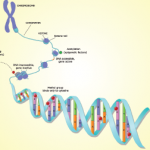NEW YORK (Reuters Health)—Gene expression and chromatin accessibility can be used to identify two Crohn’s disease (CD) molecular subclasses that match distinct disease phenotypes, researchers report.
“The hope one day is to be able to test Crohn’s patients for the subtype of the disease they have, and thus determine which treatment should work best,” Dr. Shehzad Z. Sheikh from the University of North Carolina at Chapel Hill tells Reuters Health by email. “The idea is to find the best therapeutic course for each patient as quickly and efficiently as possible.”
Molecular subtypes defined by gene expression have been documented in other complex diseases. But it remains largely unknown whether molecular classes can explain the heterogeneous phenotypes seen in CD, Dr. Sheikh and colleagues explain in Gut, online Oct. 14.1
To investigate, the team examined gene expression and chromatin accessibility in unaffected colon mucosa from 21 patients with CD and 11 patients with non-inflammatory bowel disease (non-IBD).
They used principal components analysis (PCA) to identify two distinct, expression-based subclasses of individuals with CD, one of which clustered with the non-IBD controls.
Most of the top 25 differentially expressed genes had tissue-specific expression patterns that discriminated colon from small intestine (ileum), according to the Oct. 14 online report.
CD samples similar to non-IBD controls expressed colon-specific genes, whereas samples from the other CD subclass showed expression patterns more consistent with ileum despite being sampled from the colon.
Chromatin accessibility data suggested that these subclasses exist due to stable molecular transformations of the genomic architecture in colon tissue cells and not due to transient differences resulting from external cellular signaling.
Samples from ileal biopsies of treatment-naïve pediatric CD patients revealed a similar pattern, suggesting that the colon-like and ileum-like molecular signatures define two forms of CD regardless of tissue sampling location, patient age, or treatment status.
The gene expression profiles also revealed differences in lipid metabolism and metabolism of foreign agents between the two subclasses.
The molecular subclasses were associated with clinical outcomes. Patients with colon-like CD displayed both colon and ileum involvement, had deep ulcers, and showed macroscopic inflammation, while patients with ileum-like CD were less likely to show inflammation and more likely to have colon-only involvement.
“As an initial follow-up and to confirm our findings in a much larger set of patient samples, we were recently funded by the National Institutes of Health,” Dr. Sheikh says. “With this long-term study we would test patients for their Crohn’s subtype when they are initially diagnosed with the disease, and then follow them for several years to see whether the assigned subtype predicts the disease course. Furthermore, we are exploring these molecular markers in serum to allow for practical application at the patient’s bedside.”


